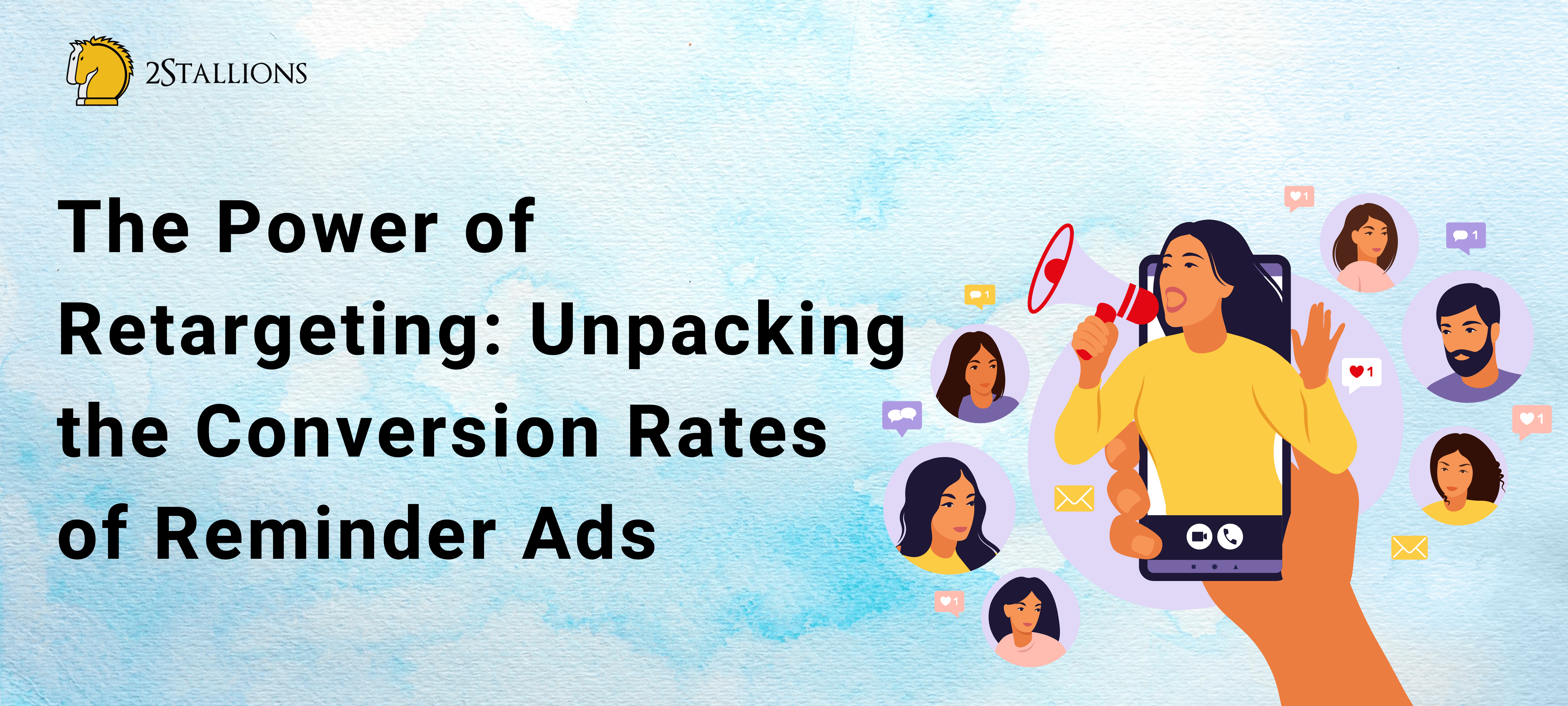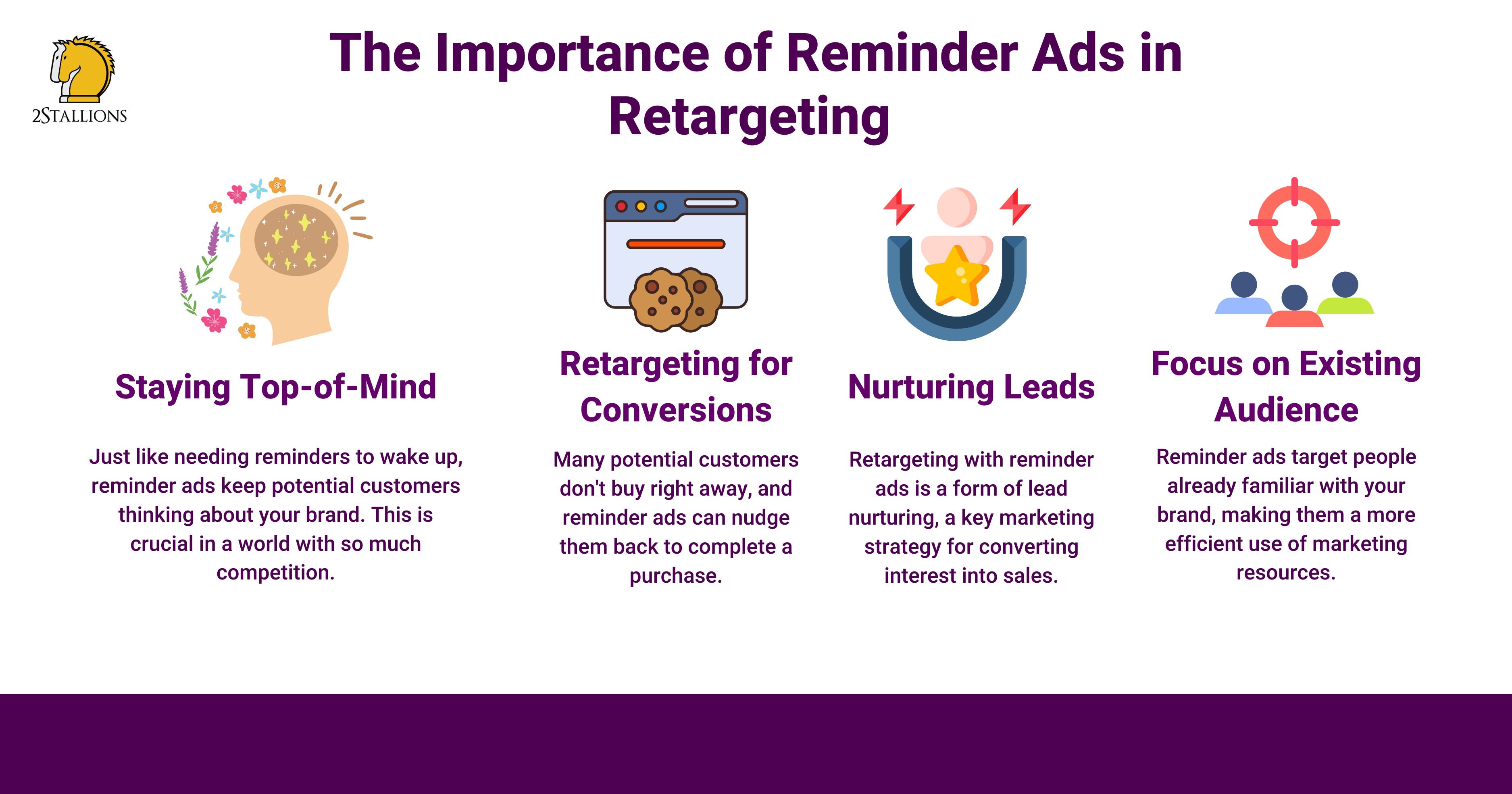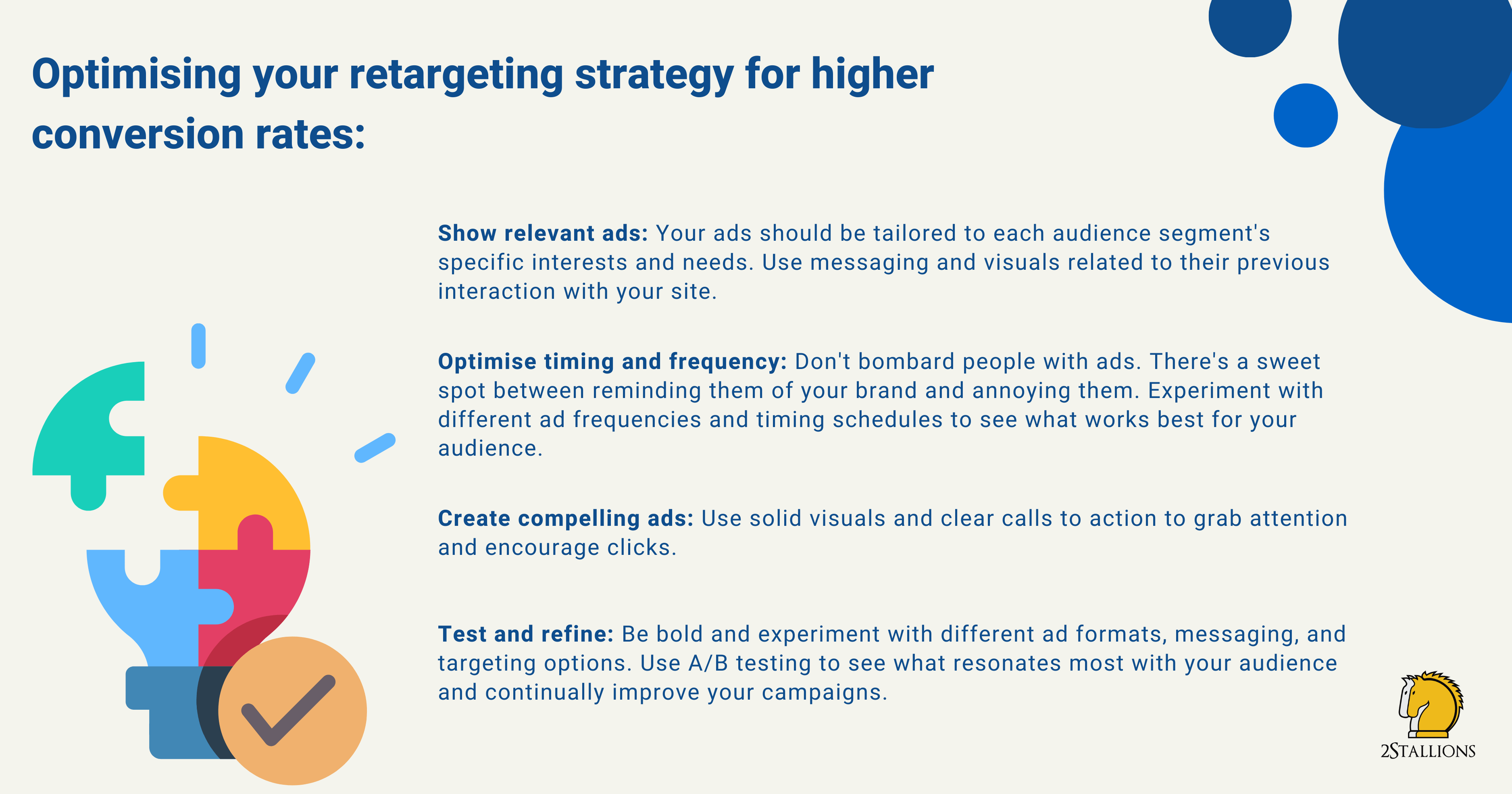SHARE

In today’s digital landscape, where consumers are constantly bombarded with advertisements, businesses must find creative ways to grab their attention and convert them into paying customers. One effective strategy that has gained significant traction is retargeting, a powerful technique that allows businesses to engage with potential customers who have previously shown interest in their products or services. In this article, we will explore the concept of retargeting and delve into the conversion rates of reminder ads, highlighting their impact on your digital marketing campaigns.

Understanding the Concept of Retargeting
Retargeting, also known as remarketing, is a digital advertising technique that enables businesses to target individuals who have visited their website or interacted with their brand in some way. It involves displaying tailored ads to these individuals as they browse the internet, reminding them of the products or services they are interested in. Unlike traditional advertising methods that cast a wide net, retargeting focuses on a specific audience, increasing the chances of conversions and delivering a higher return on investment.
Retargeting is a powerful tool in digital marketing, allowing businesses to stay connected with potential customers long after they have left their website. By keeping your brand fresh in the minds of these individuals, retargeting helps maintain a presence and encourages them to return and complete their purchase. This technique creates a personalised experience for each user, resonating with their specific needs and preferences, ultimately increasing the likelihood of conversion.
The Role of Retargeting in Digital Marketing
Retargeting plays a pivotal role in digital marketing by keeping your brand fresh in the minds of potential customers. It allows you to maintain a presence even after they have left your website, enticing them to return and complete their purchase. By targeting individuals who have demonstrated an interest in your brand, you can create personalised experiences that resonate with their needs and preferences, increasing the likelihood of conversion.
Imagine this scenario: a potential customer visits your website, browses through your products or services, but leaves without purchasing. Without retargeting, there is a high chance that this individual will forget about your brand as they continue their online journey. However, with retargeting, you can remind them of their initial interest and reignite their desire to engage with your brand.
Retargeting allows you to strategically position your ads in front of these potential customers as they navigate the internet. By displaying tailored ads that showcase the products or services they are interested in, you can capture their attention and entice them to revisit your website. This personalised approach creates a seamless and relevant experience for the user, increasing the chances of conversion and ultimately driving revenue for your business.
How Retargeting Works: A Brief Overview
Retargeting relies on using cookies, small pieces of data stored in the user’s browser, to track their online behaviour. When a user visits your website, a cookie is dropped, enabling your retargeting provider to identify them as a potential customer. As they navigate the internet, your provider serves them with reminder ads strategically placed to capture their attention and reignite their interest in your brand.
Let’s dive a bit deeper into how retargeting works. When a user visits your website, a cookie is placed in their browser, which contains information about their visit. This cookie allows your retargeting provider to recognise the user as they continue their online journey. As they browse other websites or social media platforms, your provider displays relevant ads reminding users of their previous interaction with your brand.
These reminder ads are strategically placed to capture the user’s attention without being intrusive. They may appear as banners on websites, sponsored posts on social media, or even as suggested products on e-commerce platforms. The goal is to remind users of their initial interest and encourage them to revisit your website to complete their purchase or take the desired action.
It’s important to note that retargeting is a privacy-conscious technique. Strict privacy regulations govern the use of cookies, ensuring users have control over their data. Users can opt out of retargeting by adjusting their browser settings or using ad-blocking tools.

The Importance of Reminder Ads in Retargeting
Within the realm of retargeting, reminder ads play a crucial role. These ads are designed to remind potential customers of the products or services they initially wanted, gently nudging them to purchase. By leveraging the power of psychology and consumer behaviour, reminder ads can create a sense of urgency and persuade individuals to take the desired action.
The Psychology Behind Reminder Ads
Reminder ads tap into the psychological concept of familiarity and repetition. When individuals repeatedly see a familiar brand or product, they are more likely to develop a sense of trust and familiarity, making them more inclined to purchase. By keeping your brand in front of potential customers, you solidify your position in their minds and increase the chances of conversion.
The Impact of Reminder Ads on Consumer Behaviour
Reminder ads have a profound effect on consumer behaviour. They prompt individuals to re-engage with a brand they have shown interest in, encouraging them to overcome any objections or hesitations they may have had. You can effectively guide potential customers towards your desired conversion goal by strategically positioning your reminder ads and considering the customer journey and touchpoints.

Analysing the Conversion Rates of Reminder Ads
Effectively measuring the success of your retargeting campaigns is crucial for optimising your strategy and achieving higher conversion rates. To evaluate the performance of your reminder ads, it is essential to understand the critical metrics involved and interpret the data they provide.
Key Metrics for Measuring Conversion Rates
Key metrics can provide valuable insights when assessing your reminder ads’ effectiveness. These include click-through rates (CTR), conversion rates, cost per click (CPC), and return on ad spend (ROAS). By carefully analysing these metrics, you can determine which aspects of your retargeting campaigns are working well and identify areas for improvement.
Interpreting Conversion Rate Data for Retargeting Campaigns
Conversion rate data can offer valuable insights into the performance of your reminder ads. A high conversion rate indicates that many retargeted individuals completed the desired action, whether purchasing, signing up for a newsletter, or downloading an app. By understanding the factors influencing conversion rates, such as ad placement, ad design, and audience targeting, you can optimise your strategy for better results.

Optimising Your Retargeting Strategy for Higher Conversion Rates
While retargeting offers immense potential for increasing conversion rates, maximising its effectiveness requires careful planning and execution. By implementing best practices and following industry insights, you can craft reminder ads that capture attention, engage potential customers, and drive them towards conversion.
Best Practices for Creating Effective Reminder Ads
When creating reminder ads, it’s essential to consider several best practices to maximise their impact. These include maintaining brand consistency, using compelling visuals and copy, incorporating scarcity and urgency, and ensuring seamless integration across various devices and platforms.
Tips for Improving Your Retargeting Conversion Rates
To improve your retargeting conversion rates, it’s crucial to test and tweak your campaigns continually. By monitoring the performance of your ads, experimenting with different targeting options, and A/B testing various ad creatives, you can fine-tune your strategy and achieve higher conversion rates over time.

The Future of Retargeting and Reminder Ads
Like any digital marketing strategy, retargeting is subject to evolving trends and changes. To stay ahead of the curve and ensure continued success, it’s essential to be aware of emerging trends in retargeting and predict how they may impact conversion rates and overall strategy.
Emerging Trends in Retargeting
Retargeting is continually evolving, with new trends and technologies offering exciting possibilities. Some emerging trends include cross-device retargeting, dynamic product retargeting, and the integration of artificial intelligence and machine learning algorithms to enhance targeting precision and personalisation.
Predicted Changes in Conversion Rates and Strategies
As retargeting continues to evolve, conversion rates are expected to become even more targeted and precise. With advancements in technology and data analytics, businesses will have more significant insights into consumer behaviour, allowing for highly personalised retargeting campaigns. Additionally, integrating voice assistants and augmented reality may open new avenues for engaging potential customers and driving conversions.
Businesses can significantly impact their conversion rates and achieve tangible results by harnessing the power of retargeting and leveraging the effectiveness of reminder ads. By understanding the concept of retargeting, the psychology behind reminder ads, and the various strategies for optimising conversion rates, businesses can stay ahead of the competition and maximise their digital marketing efforts.
Frequently Asked Questions About Conversion Rates of Reminder Ads
What Is the Power of Retargeting?
Retargeting’s power lies in reaching out to people who have already shown interest in your brand or product. This makes them much more likely to convert into paying customers than someone who has yet to interact with your business. You can nudge them further down the sales funnel by reminding them about your offerings and tailoring messages to their previous actions.
What Is the Conversion Rate for Retargeting Ads?
There’s no one-size-fits-all answer to this, as conversion rates depend on factors like industry, product type, and campaign quality. However, studies suggest retargeting campaigns can deliver significantly higher conversion rates than generic advertising. Some sources claim retargeting can be ten times more effective.
What Is Retargeting, and How Can It Be Used to Increase Conversions?
Retargeting is a digital marketing strategy that involves showing ads to people who have previously visited your website or interacted with your brand online. This is done by placing a tracking code (like a cookie) on their browser, allowing you to target them with specific ads on other websites or social media platforms.
What Are the Effects of Retargeting Ads?
Retargeting can have several positive effects:
- Boosts sales and conversions: You can significantly increase your conversion rates and sales by re-engaging interested visitors.
- Improves return on ad spend (ROAS): Retargeting focuses on people already familiar with your brand, so you get more bang for your advertising buck.
- Enhances brand recognition: Repeated exposure to your brand through retargeting ads keeps you top-of-mind for potential customers.





